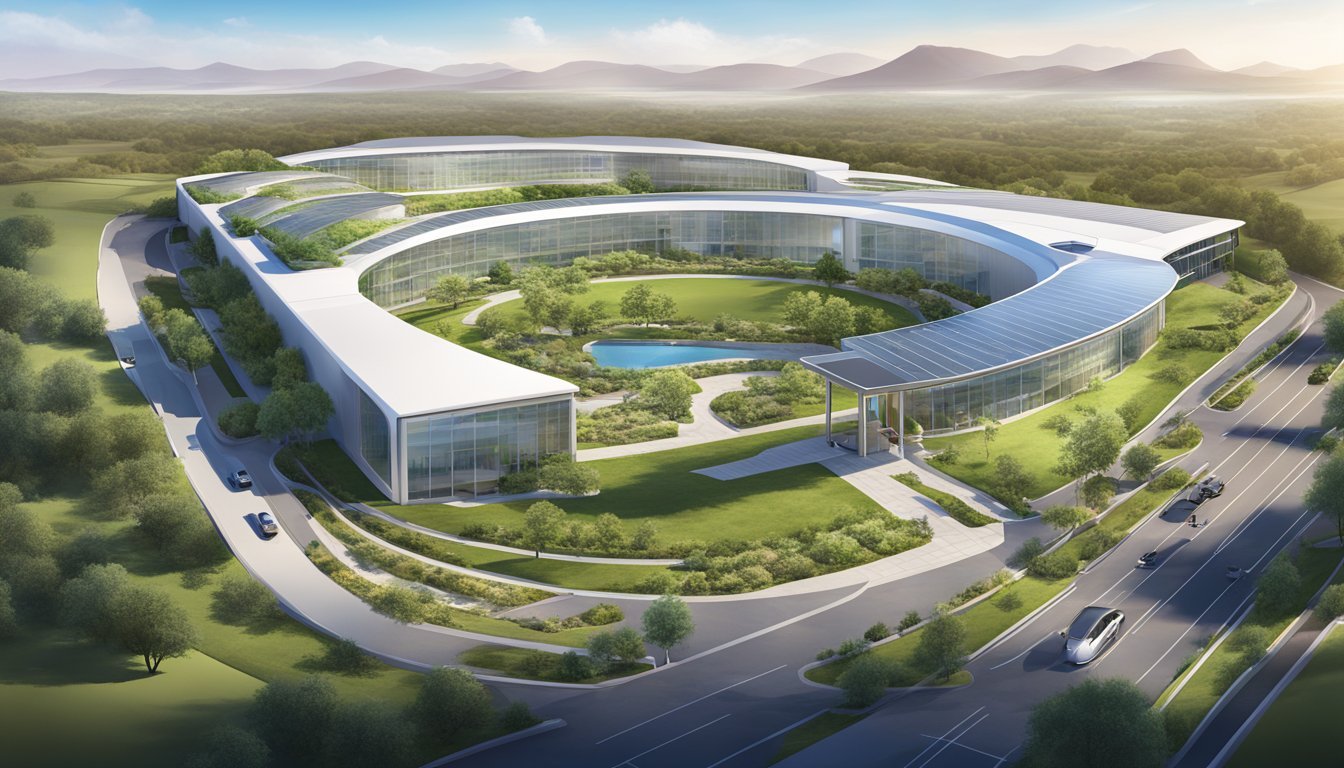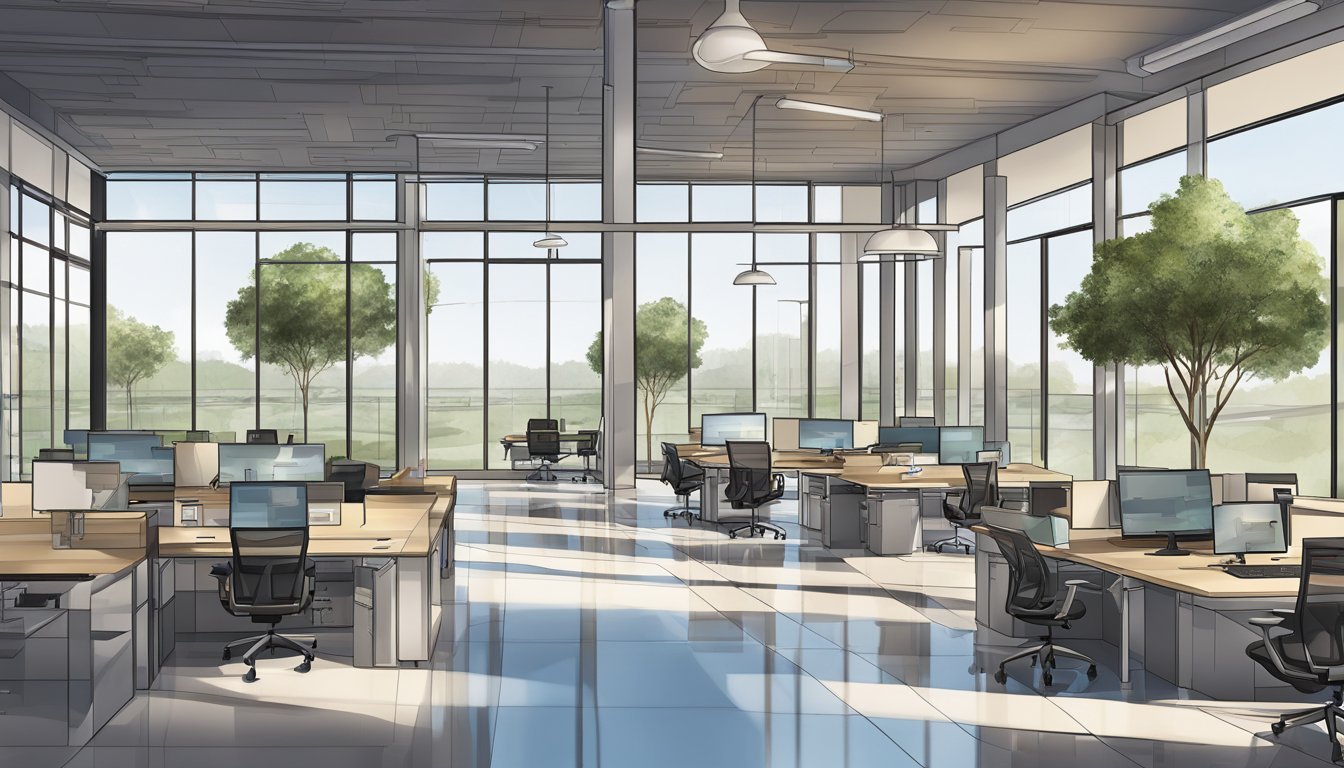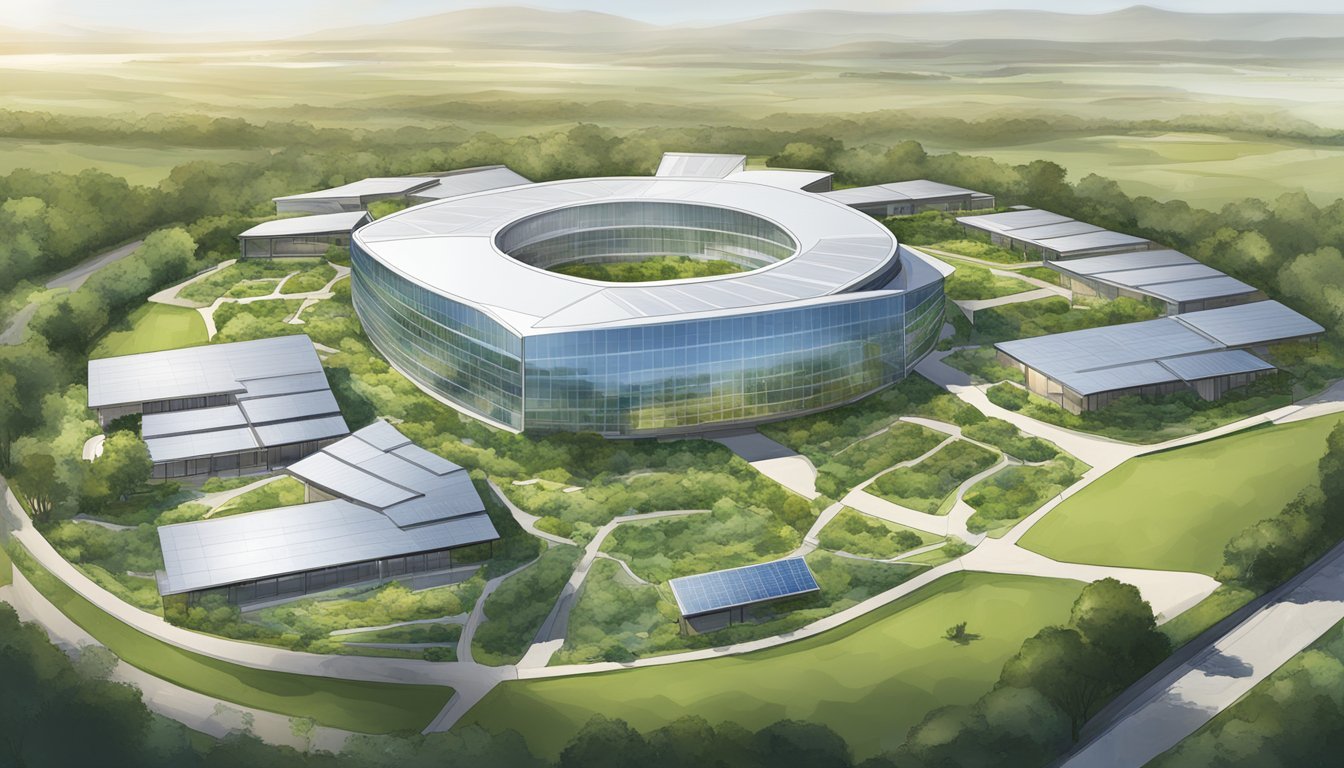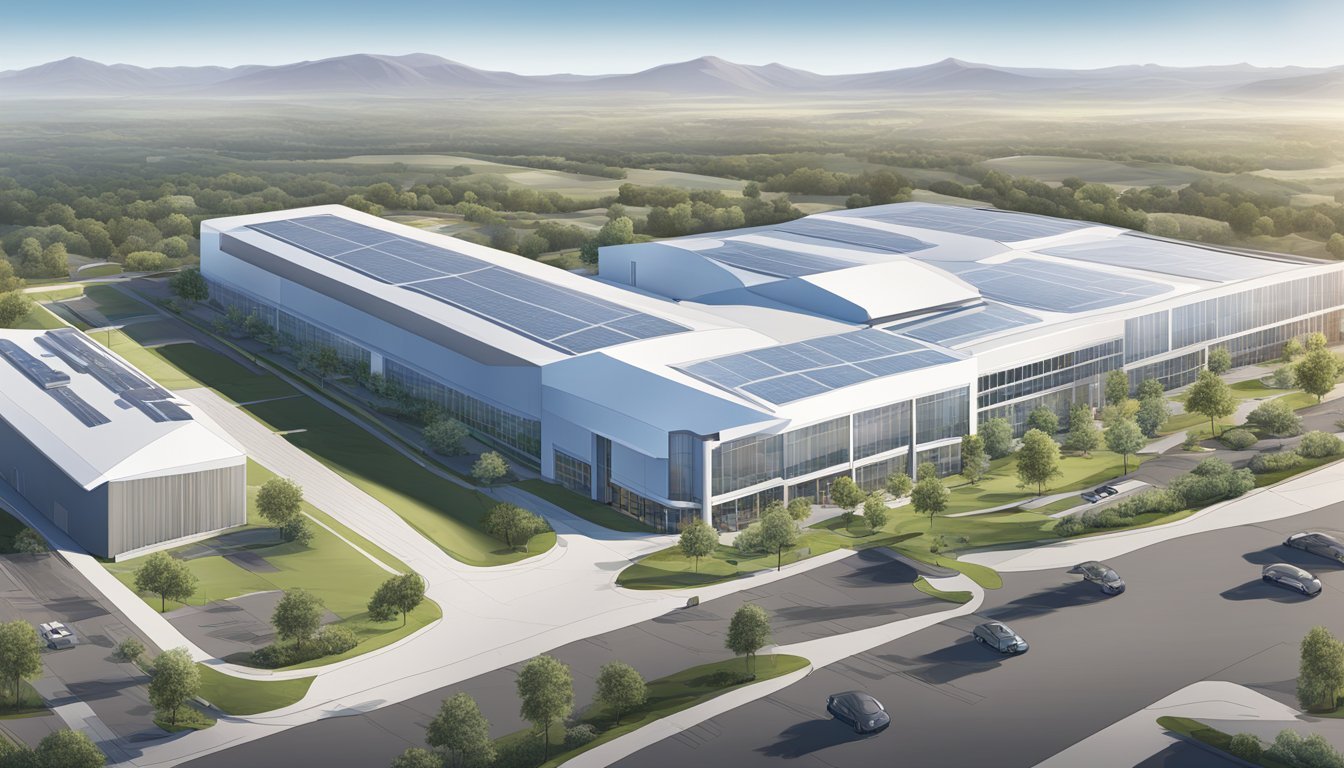Tesla's Austin HQ: A Colossal Innovation Hub Bigger Than Three Pentagons!
Tesla's new global headquarters in Austin, Texas is a marvel of modern manufacturing and corporate facilities. Located at Gigafactory Texas, the sprawling complex showcases the company's commitment to innovation and scale.
Tesla's Austin headquarters spans an impressive 338 million cubic feet, equivalent in size to three Pentagon buildings. This massive footprint provides ample space for vehicle production, research and development, and corporate operations. The facility, also known as Giga Texas, serves as the manufacturing hub for the Model Y and the upcoming Cybertruck.
Situated just outside Austin proper, the Tesla headquarters represents a significant investment in the Lone Star State. The move from California to Texas was completed in December 2021, signaling a new chapter for the electric vehicle pioneer. With its sheer size and advanced capabilities, the Austin facility positions Tesla to meet growing demand and push the boundaries of automotive technology.
Tesla's Corporate Evolution
Tesla's journey from a Silicon Valley startup to a global automotive powerhouse has been marked by strategic decisions and bold leadership. The company's headquarters relocationreflects its growth and changing priorities.
Journey from Palo Alto to Austin
Tesla was founded in 2003 in San Carlos, California. The company later moved to Palo Alto in 2009, establishing its presence in the heart of Silicon Valley. In 2021, Tesla announced its plan to relocate its corporate headquarters to Austin, Texas.
The move was completed on December 1, 2021. Tesla's new headquarters is situated on the massive Gigafactory Texas site, a sprawling facility that serves as both a manufacturing hub and corporate center.
Strategic Relocation Reasons
Tesla cited several factors for its headquarters move. Texas offered a more business-friendly environment with lower taxes and fewer regulations compared to California. The state's central location provided better access to Tesla's expanding U.S. operations.
Austin's growing tech scene and talent pool were attractive to Tesla. The move also brought the company closer to its new vehicle production facilities, streamlining operations and reducing costs.
The relocation aligned with Tesla's expansion plans and long-term growth strategy.
Leadership and Vision
Elon Musk, Tesla's CEO, played a crucial role in the decision to move the company's headquarters. Musk had expressed frustration with California's regulations and high costs of living.
The move to Austin reflected Musk's vision for Tesla's future - a more integrated operation combining manufacturing, research, and corporate functions. This approach aimed to foster innovation and accelerate product development.
Tesla's leadership saw the relocation as an opportunity to reshape the company's culture and operational structure. The move signaled Tesla's transition from a niche automaker to a major player in the global automotive industry.
Gigafactory Texas Overview
Tesla's Gigafactory Texas represents a major expansion of the company's manufacturing capabilities in North America. The massive facility serves as a key production hub for Tesla vehicles and components.
Founding and Purpose
Gigafactory Texas broke ground in 2020 in Travis County, just outside Austin. Tesla aimed to increase production capacity and bring manufacturing closer to key markets. The facility focuses on producing the Model Y crossover and the upcoming Cybertruck.
At over 10 million square feet, Giga Texas ranks among the world's largest buildings by floor space. Its sheer size allows for vertically integrated manufacturing, housing production lines for vehicles, batteries, and other components under one roof.
The factory's strategic location provides logistical advantages for distributing vehicles across North America. It also taps into the growing tech talent pool in the Austin area.
Giga Texas vs Fremont Plant
Giga Texas dwarfs Tesla's original Fremont plant in scale and production capacity. While Fremont covers about 5.3 million square feet, Giga Texas sprawls across 10 million square feet - nearly double the size.
The newer facility incorporates lessons learned from Fremont, with a more efficient layout and state-of-the-art automation. This allows for higher production volumes and improved quality control.
Giga Texas can produce vehicles at a lower cost than Fremont due to economies of scale and newer technology. Its central location also reduces shipping distances to many North American markets.
Impact on North American Operations
Giga Texas significantly boosts Tesla's North American production capacity. The factory allows Tesla to meet growing demand for electric vehicles without relying solely on imports from its Shanghai plant.
As Tesla's largest U.S. facility, Giga Texas creates thousands of jobs. Recent reports indicate the factory employs over 22,000 workers, making Tesla Austin's largest private employer.
The plant's battery production capabilities reduce Tesla's reliance on external suppliers. This vertical integration gives the company more control over its supply chain and costs.
Design and Construction Details
Tesla's Gigafactory Texas showcases impressive scale and innovative features. The facility incorporates cutting-edge manufacturing processes and sustainable design elements.
Construction Milestones
Construction of Gigafactory Texas began in July 2020. The project moved at a rapid pace, with the main structure completed in under a year.
Tesla held its "Cyber Rodeo" grand opening event in April 2022, marking the official start of production. The factory reached volume production of Model Y vehicles by the end of 2022.
The facility spans 338 million cubic feet, equivalent to three Pentagon buildings. It consists of multiple interconnected structures built in parallel.
Innovative Features
Gigafactory Texas utilizes advanced manufacturing techniques. The factory incorporates large-scale die casting machines to produce single-piece vehicle underbodies.
Tesla implemented a highly automated production line with numerous robots working alongside human employees. The facility features a streamlined layout to optimize efficiency.
The factory includes dedicated areas for battery cell production, allowing for vertical integration of key components. This approach aims to reduce costs and improve quality control.
Sustainability Practices
Tesla designed Gigafactory Texas with sustainability in mind. The facility incorporates a massive solar array on its roof, generating clean energy to power operations.
The factory utilizes energy-efficient lighting and climate control systems to minimize environmental impact. Tesla implemented water recycling and conservation measures throughout the facility.
The company prioritized the use of recycled and locally-sourced materials in construction. The factory's design allows for natural lighting in many areas, reducing energy consumption.
Economic and Environmental Impact
Tesla's headquarters in Austin has significantly impacted the local economy and environment. The company's presence has created jobs, stimulated economic activity, and introduced new environmental considerations to the region.
Job Creation and Employment
Tesla's Austin facility has become a major employer in Central Texas. The company reports employing approximately 15,000 people at its Giga Texas plant. These jobs span various roles, from manufacturing and engineering to administrative positions. The influx of Tesla employees has boosted the local economy, increasing demand for housing, services, and consumer goods in the Austin area.
Tesla's presence has also attracted suppliers and partners to the region, further expanding job opportunities. The economic ripple effect extends beyond direct employment, supporting additional jobs in related industries and services.
Environmental Stewardship
Tesla's Austin headquarters faces both opportunities and challenges in environmental stewardship. The company's focus on sustainable energy aligns with eco-friendly initiatives. However, the scale of its operations raises concerns about resource use and environmental impact.
Tesla's facility near the Colorado River has prompted discussions about water usage and conservation. The company has implemented water recycling systems and aims to minimize its environmental footprint.
The production of electric vehicles contributes to reducing carbon emissions in the transportation sector. Tesla's presence may encourage the adoption of sustainable practices in the region.
State and Local Subsidies
Tesla received substantial incentives to establish its headquarters in Austin. The company benefited from tax breaks and other financial incentives from state and local governments. These subsidies aimed to attract Tesla's investment and job creation to the area.
Travis County and Del Valle Independent School District offered tax rebates estimated at $60 million over 10 years. The exact value of state-level incentives remains less clear.
Critics argue the subsidies may strain local budgets, while supporters claim the economic benefits outweigh the costs. The long-term impact of these incentives on local finances and services continues to be a topic of debate.
Vehicle Production Capabilities
Tesla's Gigafactory Texas boasts impressive vehicle production capabilities, focusing on key models and innovative manufacturing technologies. The facility aims to significantly boost Tesla's output and introduce new product lines.
Model Y and Cybertruck Focus
Gigafactory Texas prioritizes production of the Tesla Model Y and Cybertruck. The factory achieved a production rate of 5,000 Model Y vehicles per week in May 2023. This rapid ramp-up demonstrates the facility's efficiency and capacity. The Cybertruck, Tesla's highly anticipated electric pickup, is slated for production at this site. Its unique design and manufacturing requirements have led to specialized production lines being developed.
Tesla has implemented advanced manufacturing techniques for both vehicles. The Model Y benefits from large casting machines, reducing the number of parts and simplifying assembly. The Cybertruck's production will utilize Tesla's expertise in stainless steel fabrication and innovative body construction methods.
Tesla Semi Integration
While less prominent than the Model Y and Cybertruck, the Tesla Semi is also part of Gigafactory Texas's production plans. The electric semi-truck requires dedicated assembly lines due to its size and specialized components. Tesla aims to integrate Semi production alongside its other vehicle lines, leveraging shared technologies and manufacturing processes where possible.
The Semi's battery pack production and powertrain assembly are key focus areas within the facility. Tesla's advancements in high-capacity battery technology and electric drivetrains developed for the Semi may also benefit other vehicle lines produced at the factory.
Production Technologies
Gigafactory Texas employs cutting-edge production technologies to enhance efficiency and quality. The facility utilizes Giga Press machines, enormous die-casting presses that produce large single-piece components. These machines significantly reduce the number of parts required for vehicle assembly, streamlining the production process.
Tesla's structural battery pack design is another innovative technology implemented at the factory. This approach integrates the battery cells directly into the vehicle's structure, improving rigidity and reducing weight. Advanced robotics and automation systems are employed throughout the production lines, ensuring precision and consistency in manufacturing processes.
The factory also incorporates Tesla's latest advancements in battery cell production, including the 4680 cell format. These cells offer improved energy density and cost efficiency, contributing to the overall performance and affordability of vehicles produced at Gigafactory Texas.
Technological Advancements in Manufacturing
Tesla's Gigafactory Texas showcases cutting-edge manufacturing innovations. The facility incorporates state-of-the-art automation and production techniques to boost efficiency and output.
Battery Production Innovations
Tesla's battery production at Giga Texas utilizes advanced cell manufacturing methods. The factory produces 4680 battery cells, which offer improved energy density and lower costs. These cylindrical cells are larger than previous designs, allowing for simplified production and assembly.
Automated production lines handle cell formation, testing, and integration into battery packs. Tesla's proprietary dry electrode coating process eliminates the need for toxic solvents, reducing environmental impact and production time.
The facility also houses equipment for cathode material production, further vertically integrating Tesla's supply chain.
Scaling of Manufacturing Processes
Giga Texas employs massive die-casting machines known as Giga Presses. These machines produce large single-piece castings for vehicle frames, significantly reducing part count and assembly complexity.
The factory features highly automated production lines with advanced robotics. These systems handle tasks from stamping and welding to final assembly, increasing precision and speed.
Tesla's manufacturing software optimizes production flow and quality control. Real-time data analytics enable rapid adjustments to production processes, enhancing efficiency and reducing waste.
The facility's layout is designed for streamlined logistics, with raw materials entering one end and finished vehicles exiting the other.
Challenges and Adaptations
Tesla's Austin headquarters has faced several hurdles since its establishment. The company has navigated complex issues ranging from a global pandemic to local regulations and expansion plans.
Navigating the Covid-19 Pandemic
The Covid-19 pandemic significantly impacted Tesla's operations in Austin. The company implemented stringent safety protocols to protect employees and maintain production. These measures included:
• Mandatory mask-wearing • Social distancing on factory floors • Enhanced cleaning procedures • Remote work options for office staff
Despite these challenges, Tesla managed to continue construction and initial operations at Giga Texas. The pandemic also accelerated the company's push towards automation and digital solutions in manufacturing and administration.
Local and National Legal Context
Tesla encountered various legal and regulatory challenges in Texas. The state's direct sales prohibition for automakers initially posed a hurdle. Tesla adapted by:
• Operating galleries instead of traditional dealerships • Utilizing online sales platforms • Advocating for legislative changes
The company also faced scrutiny over workplace safety and labor practices. Tesla worked to address these concerns through improved training programs and transparent reporting.
Expansion and Scalability Plans
As Tesla grew in Austin, it needed to scale operations rapidly. Key expansion efforts included:
• Increasing factory footprint from initial plans • Hiring thousands of new employees • Developing local supply chains
Tesla aimed to employ over 60,000 people in Austin long-term. This growth required careful planning for infrastructure, housing, and transportation needs. The company collaborated with local authorities to address these issues and ensure sustainable expansion.
Tesla's Broader Economic Role
Tesla's influence extends far beyond its automotive operations. The company plays a pivotal role in shaping technological innovation and economic growth across multiple industries.
Relationship with SpaceX and Other Ventures
Tesla and SpaceX, both led by Elon Musk, share technological synergies. SpaceX's advancements in rocket technology have benefited Tesla's battery and materials research. This cross-pollination of ideas has accelerated innovation in both companies.
Tesla's battery technology finds applications in energy storage systems for homes and utilities. The company's Powerwall and Megapack products are transforming the renewable energy landscape.
Musk's other ventures, like The Boring Company and Neuralink, also benefit from Tesla's expertise in manufacturing and automation.
Influence on the Automotive Industry
Tesla has revolutionized the automotive sector, pushing traditional manufacturers to accelerate their electric vehicle (EV) programs. The company's success has sparked a global shift towards sustainable transportation.
Tesla's direct-to-consumer sales model and over-the-air software updates have challenged established practices in the industry. Many automakers are now adopting similar approaches.
The company's Gigafactories have set new standards for manufacturing efficiency and scale. This has prompted other manufacturers to rethink their production strategies.
Tesla's Autopilot system has spurred development in autonomous driving technologyacross the automotive sector. It has also raised important discussions about the future of transportation and road safety.










